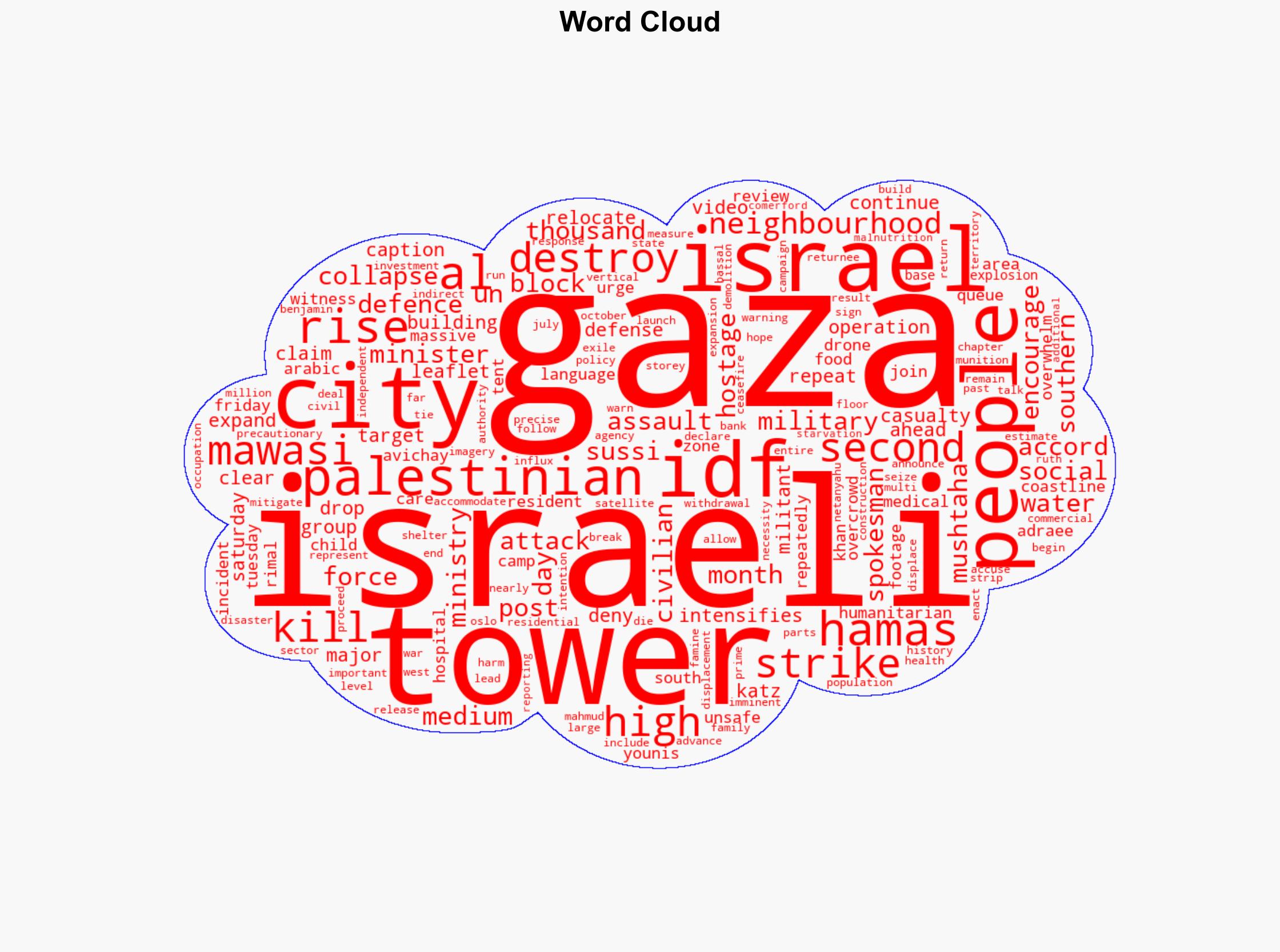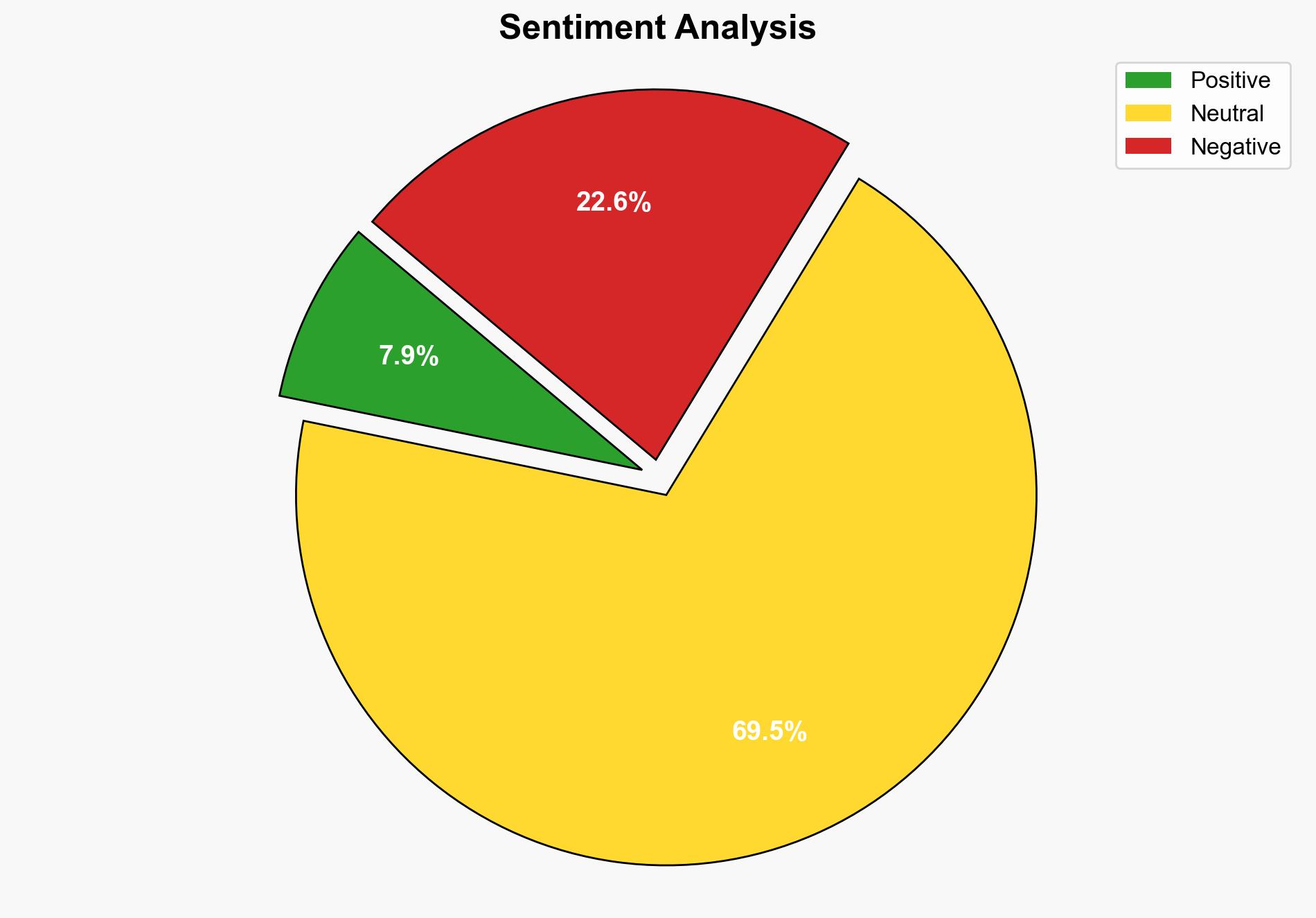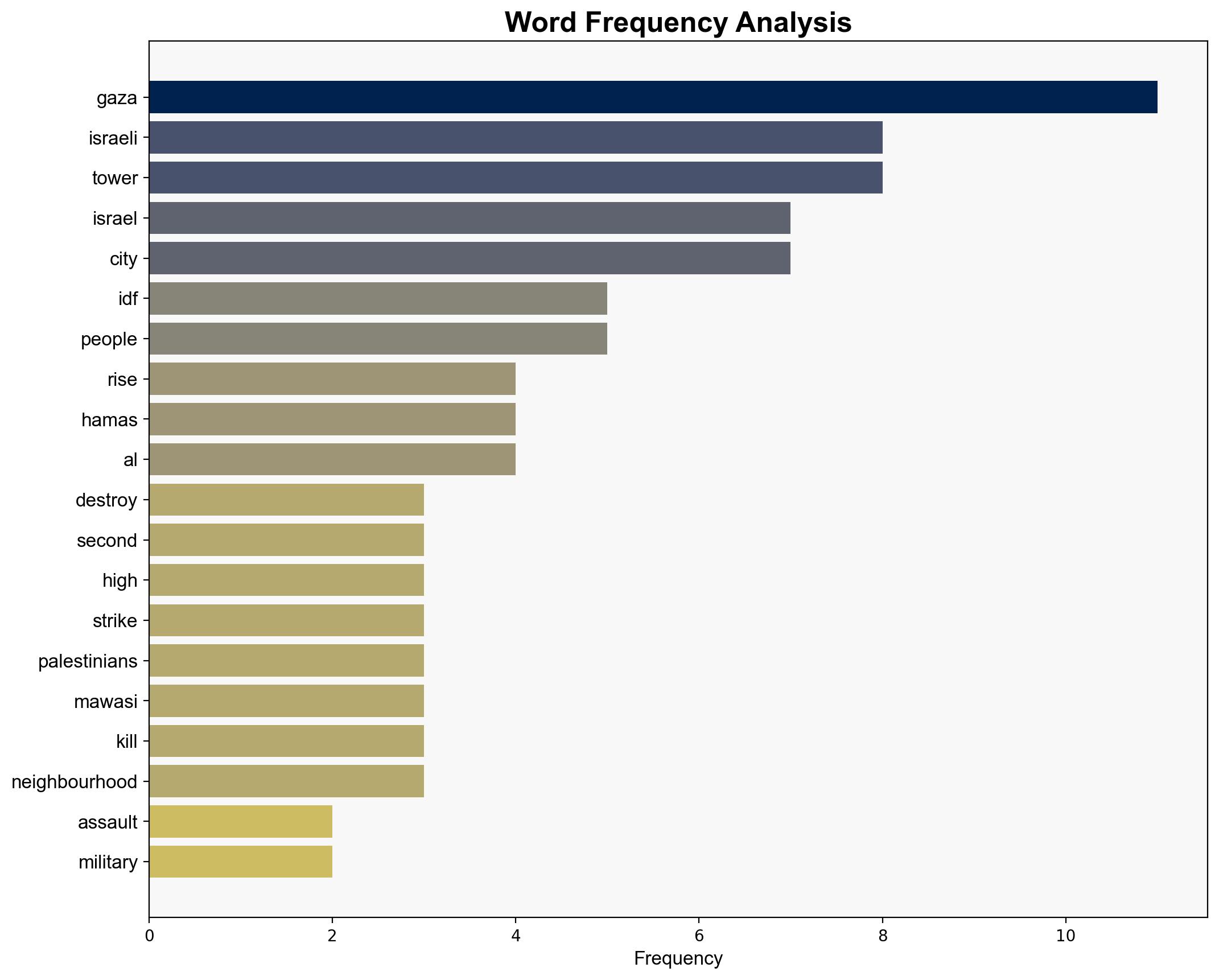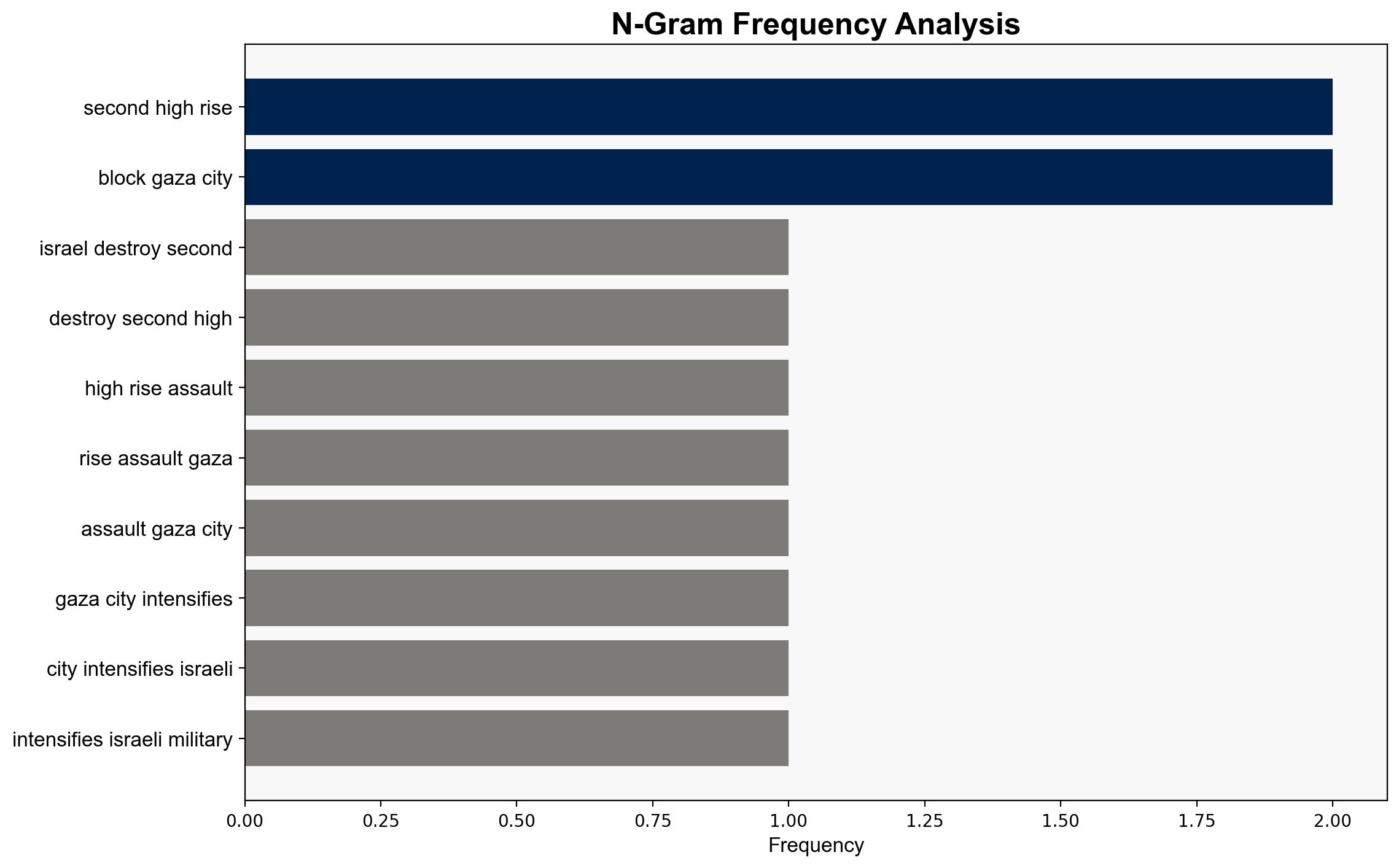Israel destroys second high-rise as assault on Gaza City intensifies – BBC News
Published on: 2025-09-06
Intelligence Report: Israel destroys second high-rise as assault on Gaza City intensifies – BBC News
1. BLUF (Bottom Line Up Front)
The most supported hypothesis is that Israel’s destruction of high-rise buildings in Gaza is a strategic effort to weaken Hamas’s operational capabilities and infrastructure. Confidence level: Moderate. Recommended action: Monitor developments for shifts in regional alliances and humanitarian impacts, and prepare for potential escalations or ceasefire negotiations.
2. Competing Hypotheses
1. **Hypothesis A**: Israel’s actions are primarily aimed at dismantling Hamas’s operational infrastructure and reducing its military capabilities by targeting key buildings used for command and control.
2. **Hypothesis B**: The destruction of high-rise buildings is intended to exert psychological pressure on the Palestinian population and force displacement, thereby undermining civilian support for Hamas.
Using the Analysis of Competing Hypotheses (ACH) 2.0, Hypothesis A is better supported due to the IDF’s stated objectives and the precision of strikes aimed at minimizing civilian casualties. Hypothesis B is plausible but less supported by direct evidence in the source text.
3. Key Assumptions and Red Flags
– **Assumptions**: It is assumed that the targeted buildings are indeed used by Hamas for military purposes. Another assumption is that the IDF’s warnings are effective in reducing civilian casualties.
– **Red Flags**: The potential for biased reporting or incomplete information regarding the true nature of the targeted buildings. The humanitarian impact may be underreported or misrepresented.
– **Blind Spots**: Lack of detailed intelligence on the specific military value of the destroyed buildings and the broader strategic objectives of both Israel and Hamas.
4. Implications and Strategic Risks
– **Escalation Risks**: Continued destruction of infrastructure could lead to increased regional tensions and provoke retaliatory actions by Hamas or allied groups.
– **Humanitarian Impact**: Displacement and overcrowding in designated “safe zones” could exacerbate humanitarian crises, potentially leading to international condemnation and pressure on Israel.
– **Geopolitical Dynamics**: Shifts in regional alliances or increased involvement by external powers could alter the strategic landscape.
5. Recommendations and Outlook
- Enhance intelligence gathering to verify the military significance of targeted structures.
- Prepare contingency plans for potential escalations, including diplomatic engagements to facilitate ceasefire talks.
- Scenario Projections:
- **Best Case**: Successful weakening of Hamas’s capabilities leads to a negotiated ceasefire.
- **Worst Case**: Escalation into broader conflict involving regional actors.
- **Most Likely**: Continued military operations with intermittent ceasefire negotiations.
6. Key Individuals and Entities
– **Avichay Adraee**: IDF Arabic-language spokesman.
– **Mahmud Bassal**: Gaza Civil Defence Agency spokesman.
– **Benjamin Netanyahu**: Israeli Prime Minister.
– **Israel Katz**: Israeli Defence Minister.
7. Thematic Tags
national security threats, regional focus, counter-terrorism, humanitarian impact





